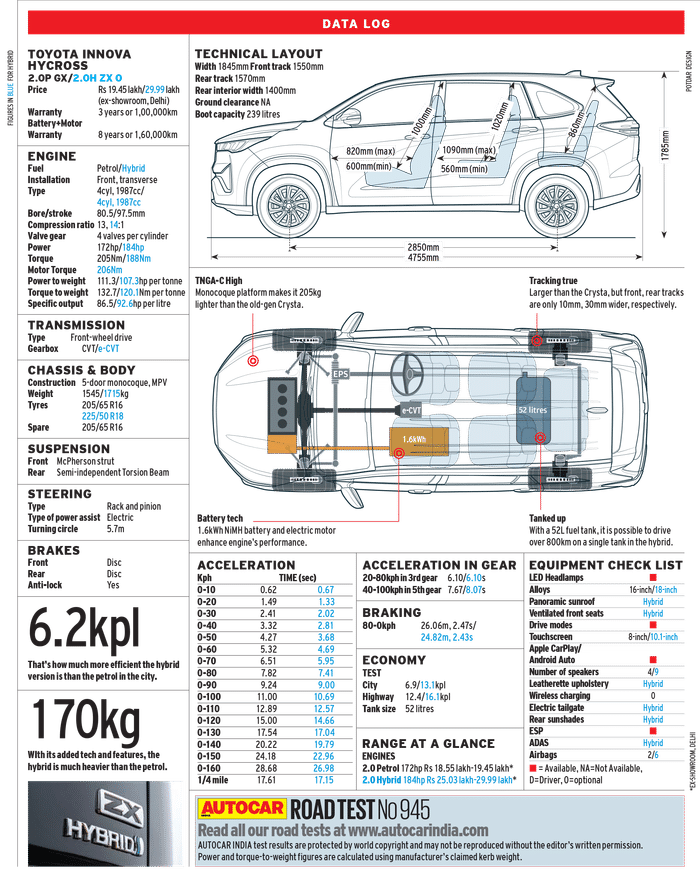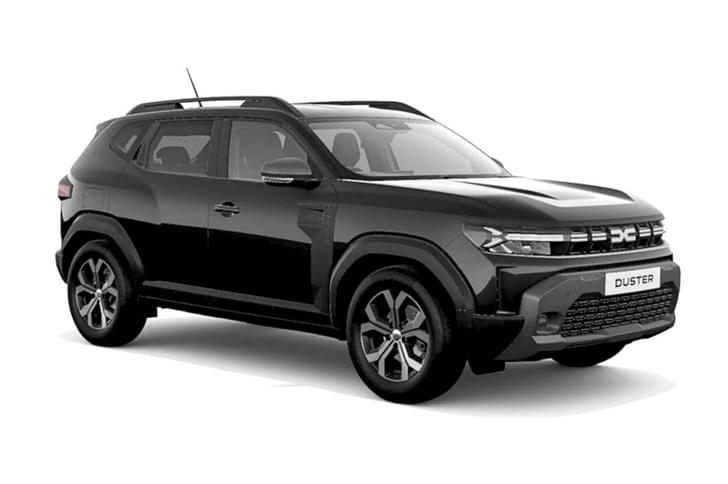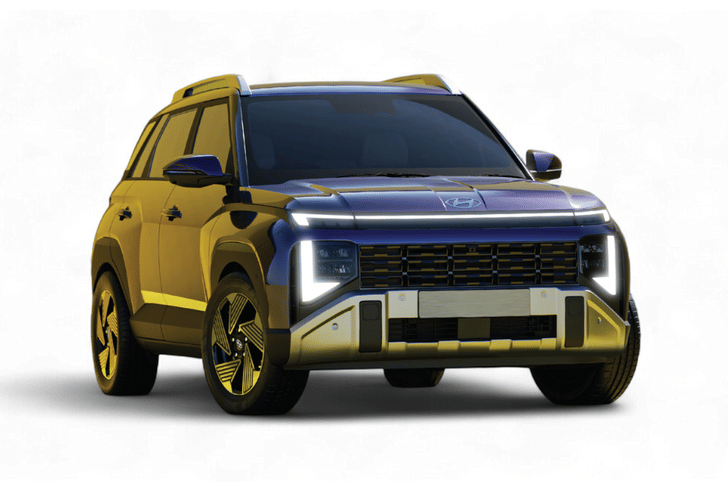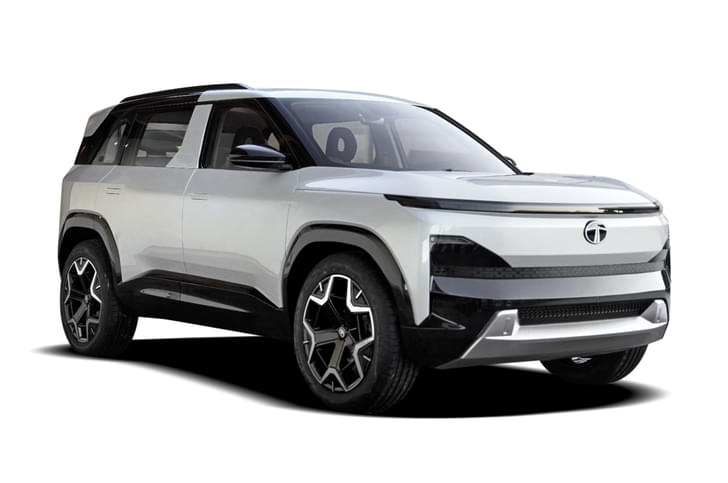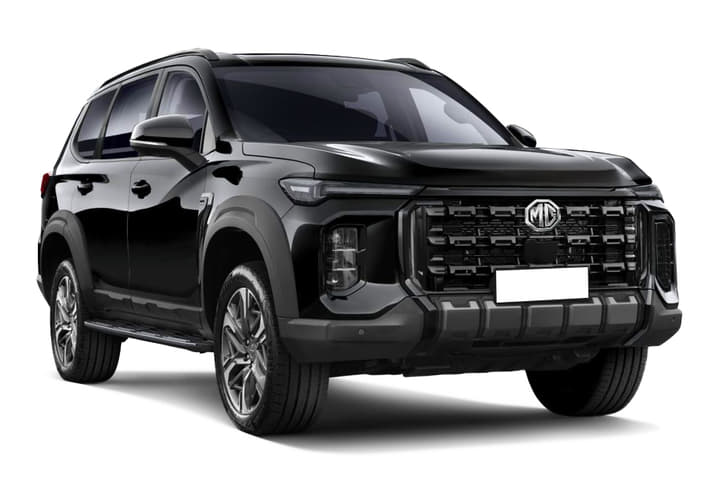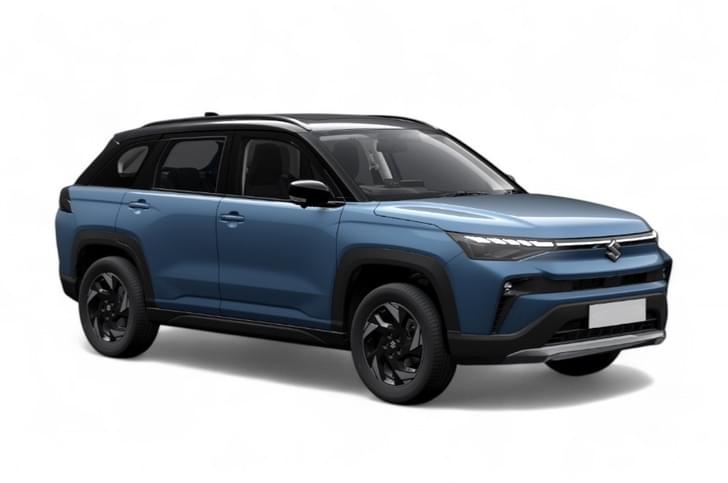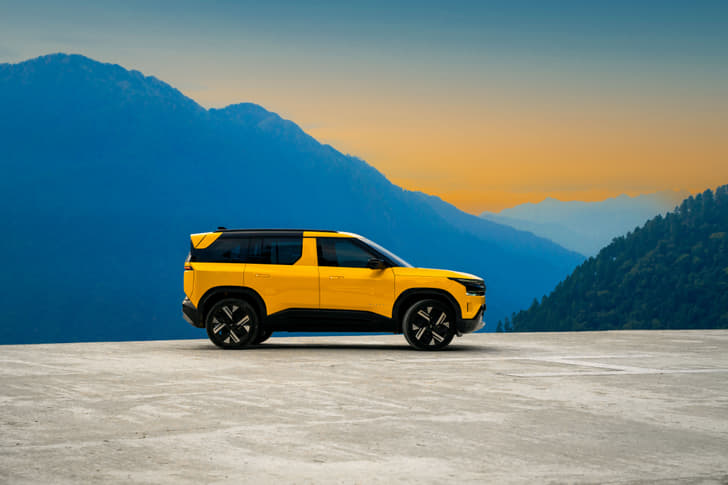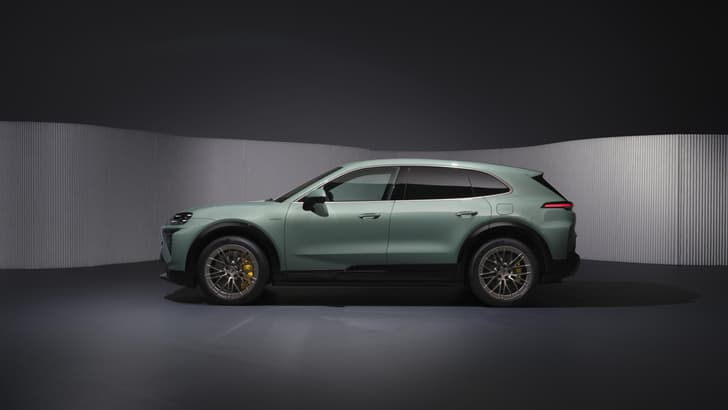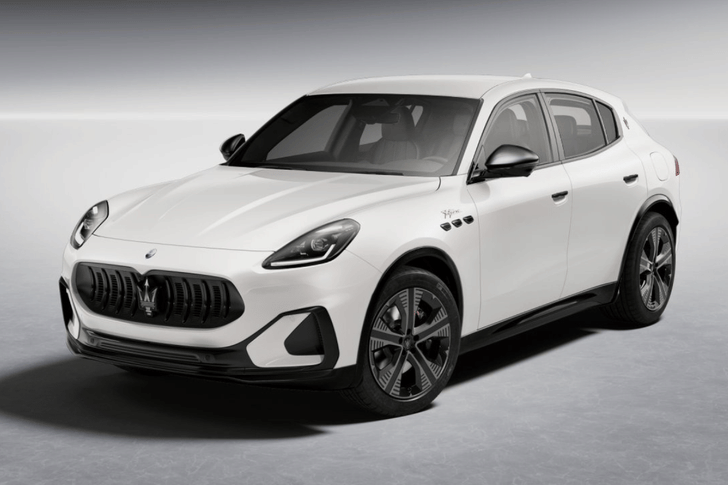The Hycross is here to carry forward the Innova’s legacy and continue Toyota’s dominance in the MPV segment. This seven or eight-seater people-mover is available only as an automatic, with either a petrol or a hybrid powertrain. For diesel lovers, Toyota sells the trusted Crysta in its manual iteration alongside.
Ex-showroom prices of the Hycross range between Rs 18.55-19.45 lakh for the petrol automatic, and Rs 25.03-29.99 lakh for the hybrid version, putting these two versions in completely different price segments altogether. And as we learnt after spending time and extensively testing these variants, they are very different from one another.
The Hycross is based on Toyota’s global TNGA-C ‘High’ platform, so it is a monocoque, the engine is transversely mounted and it powers the front wheels. This is in stark contrast to the outgoing Innova Crysta, which is a ladder-frame construction; its engine is longitudinally mounted and it drives the rear wheels. Compared to the Crysta, the Hycross is 20mm longer and wider, and has a wheelbase that’s a whopping 100mm longer; so it is a large car. And because it is based on a monocoque platform, it weighs 1,545kg, which makes it 205kg lighter than the ladder-frame petrol automatic Crysta (discontinued). The diesel with far more equipment and the hybrid tech tips the scales at 1,715kg, a whopping 170kg more than the petrol.

Toyota designers have done a splendid job in not just modernizing the Innova but also upping its butch character without losing its essence. So, what you see is an imposing, almost SUV-like front-end, courtesy of its oversized hexagonal grille, stretched-out headlamps that resemble a Fortuner and a raised, muscular bonnet. On the sides, it has some SUV-esque elements like neatly sculpted body lines, subtly defined squared-out wheel arches and plastic body cladding, but there’s no getting away from its MPV-like profile. The window line in the Hycross distinctly flows downwards towards the rear, unlike the Crysta’s sharp upward kink. Its slab-sided rear design and horizontal tail-lamps link it to some crossovers in Toyota’s international portfolio.
The hybrid version gets upmarket touches like thick chrome under its front grille, matte silver inserts on the front bumper as well as oversized horizontal LED DRLs, which double-up as turn indicators. It also features twin five-spoke 18-inch alloys finished in silver which look attractive, however the tyre profile and its narrow track, in the front and at the rear, look a bit under-tyred.
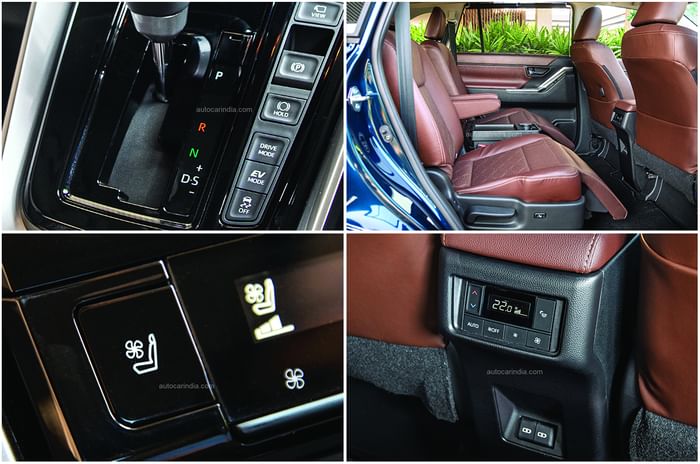
In comparison, the petrol Innova is available only in the lower-spec G and GX variants, and it screams ‘base variant’ in its appearance. Not only does it miss the silver highlights and chrome garnishings of the hybrid, but its skinny 205/65 R16 tyres lead to massive gaps in the wheel arches. This variant’s disproportionate wheel-to-body ratio makes it look almost comical from certain angles.
Being a monocoque, what you’ll immediately notice is a more agreeable cabin height due to a lower floor than the Crysta, so ingress and egress is a breeze. Its interiors are a far cry from the rather spartan cabin of the Crysta. The horizontally oriented touchscreen as well as the air vents accentuate the width of the dashboard. And the hybrid’s brown and black theme with the matte silver highlights, and some padded bits with contrasting double stitching significantly lifts its appeal. A welcome addition are physical buttons for climate control, for key functions of the touchscreen, as well as for other functions like drive modes and electric parking brake. Uniquely, the gear console is an extension of the dashboard, so it sits below the HVAC controls, and the lever operates with a rather solid, satisfying click. Fit-finish and quality of some plastics lower down don’t befit a car of this price.

The petrol’s cabin is a sea of black with rudimentary hard plastics and a plethora of dummy buttons (missing features), which don’t make an impression as strong as the hybrid. Furthermore, the black colour amplifies all the fit-finish imperfections on the inside. The rotary manual air conditioner controls look like they've been lifted off a budget car from the 90s.
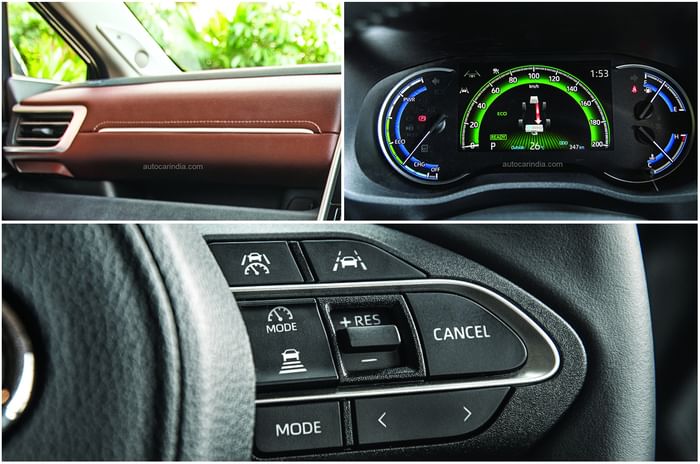 Clockwise from top left: Hybrid's brown-black colour scheme, padded bits make interior more appealing; Large, coloured instrument cluster is informative; ADAS works well and isn't intrusive.
Clockwise from top left: Hybrid's brown-black colour scheme, padded bits make interior more appealing; Large, coloured instrument cluster is informative; ADAS works well and isn't intrusive.Then there are the seats, which are large and very comfortable. The hybrid’s front seats also get a ventilation function, and the driver’s seat is electrically operable with two memory functions. Toyota has placed the hybrid’s battery beneath the front seats, and there’s even a vent on the passenger side to cool it. Thankfully, this placement doesn’t eat into the footroom and comfort of middle row passengers. In fact, the extended wheelbase ensures that knee, leg and foot room for middle passengers is plenty.
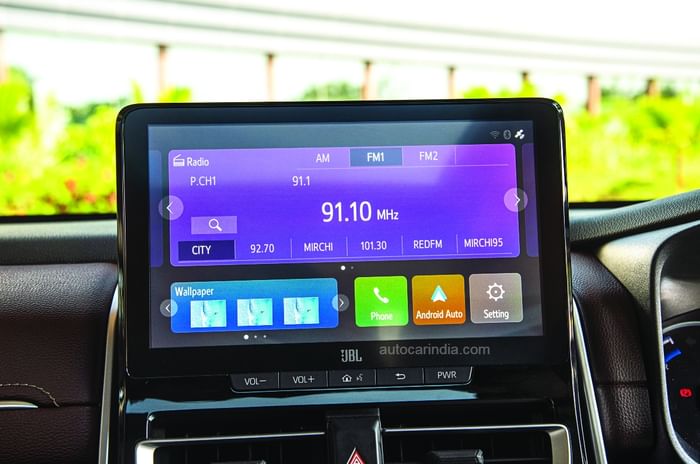
If you opt for captain’s chairs, you get a set of part-electric chairs with ottomans, extensions on which you can rest your legs when you really want to stretch out, thus taking comfort to the next level. In order to use it effectively, you’ll have to move the front passenger seat forward, therefore, it isn’t of much use behind the driver. With the middle slid fully behind and the front passenger seat all the way forward, you’re in for a business class-like experience, with the ottoman supporting your legs, and the backrest in a reclined (electrically operable) position. The passenger behind the driver’s seat, however, will have limited space to stretch.

For the comfort and convenience of rear passengers, there are window shades, a dedicated climate control unit, and a nifty foldable tray with cup holders between the captain’s chairs. The Hycross also features a panoramic sunroof that floods the cabin with light and accentuates the sense of space. AC vents move to the sides of the roof, but these did feel rather flimsy to operate.
 Broad, high-set front seats offer good visibility all around.
Broad, high-set front seats offer good visibility all around.
The petrol version we tested was an 8-seater with a bench in the middle row, which can easily seat three adults abreast, thanks to the sheer width of the cabin. The long fore-aft travel of the middle row bench, as well as a recline function for the backrest, make it very comfortable, especially for the chauffeur-driven folk. The armrest feels a bit flimsy as it falls to the seat base, like in the Honda City, and window shades for the rear doors should have been included to block sunlight.
 Hugely spacious, with ample seat support; wide enough for three adults.
Hugely spacious, with ample seat support; wide enough for three adults.
Getting to the third row is pretty easy too, as the middle row slides all the way in front, liberating a large opening to trundle through. Once sat, you’ll appreciate the space and comfort of its third row. It feels quite bright and airy, so even adults will be comfortable on long drives without feeling worse for wear.
The backrest reclines in a 50:50 ratio, and Toyota has even offered three individual headrests, as well as three-point seat belts, for the occupants. At certain backrest angles, however, taller occupants will brush their heads against the ledge of the roof, so six-footers could find headroom in short supply.
 Third row seat can fit three; two adults can sit very comfortably.
Third row seat can fit three; two adults can sit very comfortably.
With all seats in place, the boot has enough space for a couple of soft bags, but folding the third row flat liberates cavernous cargo space. What makes loading heavy luggage very convenient is the massive boot opening, low floor height and a flat loading lip. The hybrid’s electrically operable tailgate adds to the convenience.
What needs a special mention is the effectiveness of the air conditioner, which chills the cabin very quickly, even when temperatures outside are nudging 40 degrees centigrade.
 Even with all seats in place, there's still some sapce for medium-sized bags.
Even with all seats in place, there's still some sapce for medium-sized bags.
Toyota is offering the Innova Hycross with a choice of two powertrains – a 2.0-litre hybrid and a 2.0-litre naturally aspirated petrol. What’s interesting is that, while the petrol and hybrid share the same 1,987cc, four-cylinder direct-injection engine, the latter runs a more efficient Atkinson cycle wherein the intake valves remain open for a longer during the compression stroke for a lean air-fuel mixture, which also explains why the hybrid’s petrol unit makes merely 188Nm of torque by itself, compared to the standard (non-hybrid) petrol’s 205Nm.
But while the engine might seem a bit down on torque in the hybrid version, it is complemented by an electric motor for brisk responses, so performance doesn’t feel lacking; in fact far from it. Powering the electric motor is a 1.6kWh nickel metal hydride (NiMH) battery, which as explained by Toyota engineers is their go-to option for heavier cars in the line-up, as it manages thermal runaway better than lithium-ion batteries; the latter being relatively more expensive and more suited to lighter, smaller cars.
 Handling is far better than the Crysta's thanks to its light steering and monocoque construction.
Handling is far better than the Crysta's thanks to its light steering and monocoque construction.
By default, the Hycross starts on battery power and it’ll calmly potter around, with the petrol engine kicking in to recharge the battery or to provide an additional punch. Toyota claims that 50-60 percent of a typical urban commute is possible in full-electric mode, with the petrol engine playing a supporting role, however in peak summer, we noticed the air-con’s e-compressor levied tremendous load on the hybrid’s system. As a result, the petrol engine was running for the most part, which impacted fuel efficiency.
At higher speeds, it is the petrol engine that takes charge, and with the battery-motor’s electrical assistance, this 1715kg car feels responsive, and the hybrid makes light work of small increments in speed. With no spike or sudden surge, the Hycross’ acceleration is brisk yet very linear with none of that midrange oomph of a turbo-diesel. Impressively, flat-out acceleration from 0-100kph takes just 10.69sec, and it’ll even go on to hit a top speed of 170kph.
Toyota’s e-CVT (planetary gearbox) is at ease when driven sedately but with an aggressive driving style, it makes the engine feel strained, even though there’s more than enough performance on tap. There are paddleshifters on offer, so drivers can manually select six predefined ratios. These are mainly useful when you need engine braking, while going down a hill, to keep a check on the speed of the car. There are drive modes too – Power, Normal and Eco, and while there is a difference between them at part-throttle, with your foot pinned to the floor, performance is similar across the board.

The 170kg lighter petrol version tips the scales at 1545kg. Its 173hp, 2.0-litre naturally aspirated petrol impresses with its refinement and its vibe-free nature. The build-up of speed is smooth and it pulls cleanly till 6,500rpm, and feels sufficiently powerful for this people mover. Appreciably, even with a full load of passengers, it doesn’t feel dull or lacking. What’s also nice is its sprinting ability – it accelerates from 0-100kph in just 11 seconds and even hits a top speed of 175kph.
But what lets the drive experience down is its CVT (automatic) which groans and moans in protest every time you flex your right foot and demand more power. In fact, because the CVT sounds strained and protests rather vocally, drivers will be coaxed to adopt a sedate driving style and use the throttle with moderation. Like the hybrid version, the Hycross petrol also gets an Eco mode (no Power mode); however, on full throttle, performance in Eco and Normal mode is identical.
As mentioned above, our test was conducted in the peak summer with outside temperatures nudging 40 degrees centigrade, and the Innova Hycross’ air-conditioner working overtime to keep the cabin temperatures low. As a result, the hybrid’s petrol engine was running for the most part, resulting in higher fuel consumption. The hybrid Hycross returned 13.10kpl and 16.10kpl in our city and highway tests, respectively, which is lower than the smaller and lighter Hyryder hybrid, but still respectable in isolation.
Driving in Eco mode, the petrol-automatic Hycross – in our real-world fuel efficiency test – returned merely 6.9kpl in the city and 12.4kpl on the highway, averaging merely 9.7kpl. The inclusion of an engine stop-start feature would have kept a check on fuel consumption while idling, thereby improving efficiency in stop-go scenarios.
The Hycross’ monocoque construction has had a positive impact on the way it drives. Torsional rigidity is better, the structure feels taut and with a long wheelbase, dynamics have improved by a quantum leap, compared to the body-on-frame Innova Crysta. While roll and pitching has reduced significantly, and body control has improved, what really takes the drive experience up a few notches is its electric power steering. It is feather light in its operation, which is a far-cry from the Crysta’s heavy hydraulic unit. Also, with the Hycross, Toyota has opted for a narrow track in the interest of a tight turning radius, which makes maneuvering and parking this large MPV rather easy.
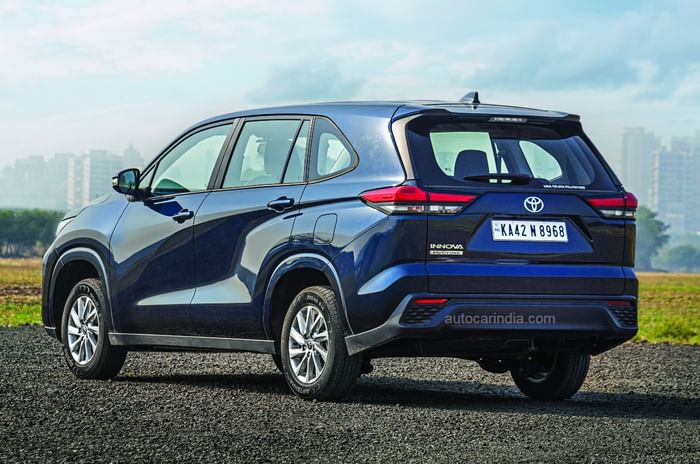
Its suspension has an underlying stiffness, and doesn’t smother bad roads like the Crysta. However, it eliminates excessive body movements well, and feels planted and well-mannered at cruising speeds. Curiously, Toyota has opted for rather low-profile 225/50 R18 tyres in the hybrid, which has some effect on ride comfort, resulting in some jolts filtering through on sharper bumps. That said, ride comfort is certainly one of the Hycross’ strengths and its flat and composed ride is something that owners are likely to appreciate.
The Toyota Innova Hycross elevates the MPV experience. It has supremely comfortable seats and thanks to its spaciousness, its ability to ferry seven or eight passengers in comfort remains unmatched. What’s more is that its monocoque construction improves its driving manners by a quantum leap - it rides flatter, handles better, and its electric power steering makes it much more user-friendly than the Crysta.
 Pricey, but the most comfortable seven- or eight-seater you'll find in this segment.
Pricey, but the most comfortable seven- or eight-seater you'll find in this segment.
The Toyota Innova Hycross petrol automatic is for buyers who want nothing but a petrol Innova, and aren’t willing to stretch for the hybrid version. Its rudimentary interiors are a let down; it misses several features, and then there’s the moaning CVT which dampens the drive experience. More importantly, its low fuel efficiency could be a deal breaker for many.
The hybrid version feels like a class above - it is better dressed to impress, feels more luxurious and packs in a lot of premium kit. Even its powertrain is smooth; it is quick, and returns rather respectable fuel efficiency. But for all its merits, Toyota is asking a rather steep premium for what it has to offer.
Sure, there are more convincing, much more affordable and better value-for-money seven-seater alternatives available in the market, but as Toyota’s sales reflected in the past, pricing hasn’t been a deciding factor for Toyota Innova buyers. And going by how the Hycross has shaped up, once again Toyota has the winning hand.
